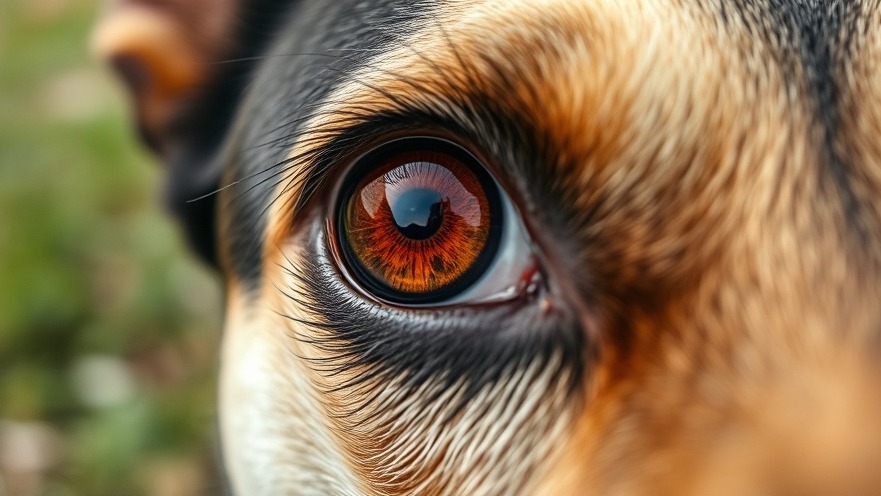
Understanding Your Dog's Bloodshot Eyes: A Deeper Dive
As dog owners, we often find ourselves deeply attuned to our furry friends’ needs, from what they eat to how they play. However, it can be alarming to notice that their sparkling eyes have taken on a disconcerting red hue. Bloodshot eyes in dogs can stem from various causes, ranging from the benign to the serious. Understanding these causes enables us to be better caretakers.
Common Causes of Bloodshot Eyes in Dogs
There are several general causes for bloodshot eyes in dogs. These include:
Environmental Irritants: Dust, pollen, and other allergens can cause your dog’s eyes to become inflamed.
Infections: Bacterial or viral infections like conjunctivitis (often referred to as pink eye) can lead to redness and discomfort.
Injury: Scratches on the cornea from scratches or injury can open the door to further complications.
Underlying Health Issues: Conditions like glaucoma or uveitis can manifest through symptoms such as bright red eyes and should not be ignored.
As discussed in Whole Dog Journal, it's crucial to pay attention to the timing and context of the symptoms — whether they appeared suddenly or have been developing over time matters significantly in diagnosing the root cause.
Should You Worry About Bloodshot Eyes?
While bloodshot eyes may seem benign, they often signal that a visit to the veterinarian is warranted. Ignoring these symptoms could result in conditions that threaten your dog’s vision or overall health, a point echoed in Vetster. Immediate vet intervention is crucial when symptoms are accompanied by:
Bleeding or extreme swelling
Dilated pupils
Excessive pawing at their face
Behavioral changes like lethargy
This is important, as early detection can significantly enhance your dog’s treatment success and prevent severe complications.
Home Care Strategies for Bloodshot Eyes
While the vet is the ultimate authority on eye issues, there are some immediate steps you can consider at home. Always consult your veterinarian before trying any home remedies. Here’s what you can do:
Flushing the Eyes: Gently flush the affected eye with sterile saline solution to remove any irritants.
Warm Compresses: Applying a warm, moist washcloth can soothe irritation and reduce inflammation.
Clean the Area: Use a soft, damp cloth to clean away discharge, ensuring the area remains hygienic and free from irritation.
Although these strategies can help provide immediate relief, they should not replace professional intervention.
Preventive Measures to Protect Your Dog's Eyes
As a caring pet owner, being proactive about your dog's eye health is essential. Here are several tips to consider:
Regular Check-ups: Ensure your dog visits the veterinarian regularly. This allows for early identification of potential health issues.
Monitoring Allergens: Be aware of the allergens present in your surroundings, especially during peak seasons.
Protective Gear: When engaging in potentially harmful outdoor activities, consider equipping your dog with protective eyewear.
Healthier environments lead to healthier pets, which, in turn, decreases the incidence of eye-related problems.
When to Seek Veterinary Help
As a dog owner, knowing when to seek help is always a fine balance. If your dog's red or bloodshot eyes persist beyond a couple of days, or if they are showing any of the serious symptoms mentioned earlier, it’s crucial to consult a vet. Getting professional advice can help alleviate any worry and pave the way for appropriate treatment.
Conclusion: Caring for Your Pooch's Precious Eyes
Bloodshot eyes in dogs may seem like an innocuous issue, but they can indicate underlying health problems that require attention. Stay vigilant, watch for additional symptoms, and don’t hesitate to seek professional help when needed. Remember, our dogs rely on us to observe, interpret, and act on their needs. After all, keeping their eyes happy and healthy contributes to their overall well-being!
Call to Action: If you notice persistent redness in your dog’s eyes, schedule a vet appointment promptly to ensure you provide the best care for your furry friend.
 Add Row
Add Row  Add
Add 




Write A Comment